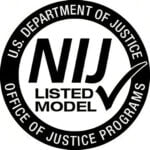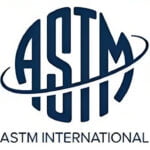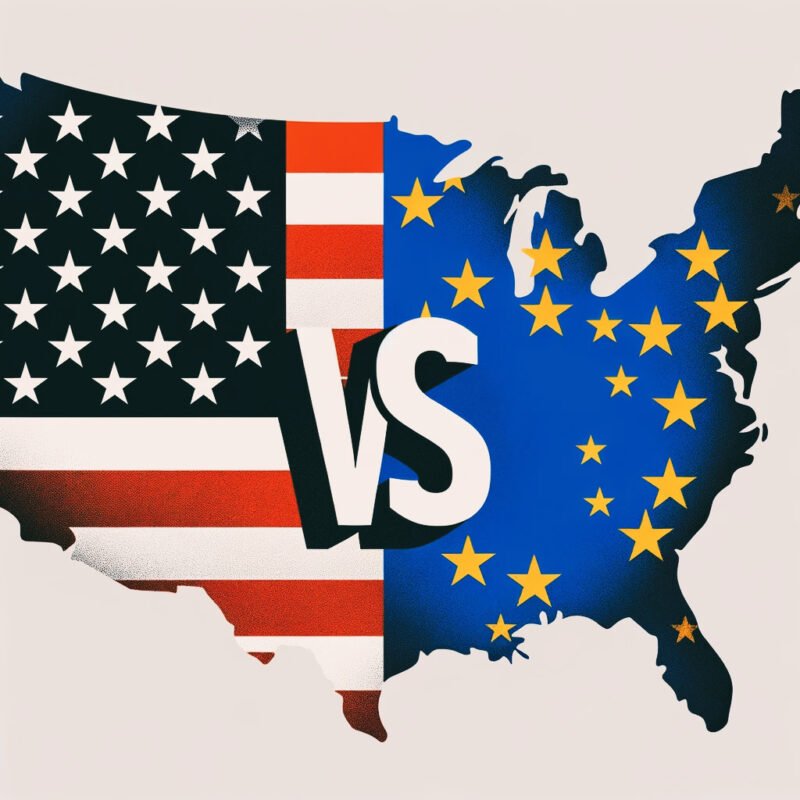In an era where technological advancement intersects with critical defense needs, the global body armor market, estimated at approximately $2.7+ billion in 2023, is a testament to relentless innovation. Projected to grow to around $3.5+ billion by 2030, with a CAGR of 4%-5%, this market’s expansion, as vividly seen at Milipol Paris 2023, is fuelled by escalating geopolitical tensions and a rise in global conflicts that do not appear to have an end in sight.
I walked the floor of this expansive Parisian exhibit over four days. I met with dozens of influential and critical players in the industry from Europe, the United States, and beyond. Out of the roughly 1100 exhibitors and more than 30,000 professionals attending, I can assure you this article barely scratches the surface.
Drawing from my 17 years at the helm of one of America’s leading body armor companies, this article digs into the nuanced interplay between European finesse and American pragmatism. We explore the unique regulatory landscapes, the advancements of European manufacturers, and the strategic rise of Chinese players, offering an insider’s perspective on the intricacies shaping the future of global body armor and its critical role in global defense and security strategies.
The European Market vs. The United States: Divergence in Body Armor Standards and Market Dynamics
Regulatory landscapes are pivotal in shaping industry dynamics in the contrasting worlds of European and U.S. body armor markets. The U.S. market, governed by NIJ ballistic standards, sets a high bar for market entry, particularly emphasizing stringent protection levels, often at the expense of flexibility and comfort. This centralized approach contrasts sharply with Europe’s diverse regulatory environment, where standards like VPAM and HOSDB allow for more varied design innovations, focusing on user comfort and adaptability to different operational needs.
Such regulatory divergences create significant market entry barriers for European manufacturers in the U.S., where the costly and complex NIJ compliance process often stifles innovation. Despite their advancements in materials and design, European firms face challenges in gaining a foothold in the U.S. market, limiting their competitive edge and market exposure. This regulatory dichotomy not only influences product development but also underscores a crucial divide in global body armor standards, affecting the availability and diversity of protective solutions.
Emerging Players in the European Body Armor Market
The European body armor market, rich in innovation and specialization, reflects a distinct response to its unique regulatory landscape. Key players such as NFM Group, Mehler Protection, CES Advanced Composites, and MKU Limited exemplify this diversity.
- NFM Group thrives by offering a wide range of military-focused protective gear, including advanced helmet systems, demonstrating Europe’s focus on integrated soldier systems beyond mere ballistic protection.
- Mehler Protection showcases European prowess in creating solutions for various operational platforms, catering to the market’s demand for versatile and resilient body armor.
- CES Advanced Composites & Defence Technologies Inc. underscores Europe’s edge in advanced materials, essential for the next generation of lightweight yet robust armor solutions.
- MKU Limited’s growth from India to Germany symbolizes the global nature of the body armor industry, with its vast array of products, including soldier optronics and platform protection solutions, indicating the market’s trend towards comprehensive defense solutions.
Collectively, these companies mirror the European market’s adaptation to diverse operational needs and regulatory standards, contrasting the more standardized approach in the U.S. market. They represent innovation in product offerings and a strategic alignment with global security demands and market dynamics.
Innovations and Global Influence of European Body Armor Firms
In the European body armor market, a crucible of innovation and specialized solutions, companies like NFM, Mehler, CES, and MKU are a handful of many redefining ballistic protection standards. These firms excel in leveraging advanced materials such as ultra-high-molecular-weight polyethylene and novel ceramic composites, offering enhanced ballistic protection with significantly reduced weight. This technological leap, often unrestricted by the global dominant Aramid and UD suppliers, is particularly crucial in scenarios where agility and reduced load are as vital as the armor’s protective capabilities.
Their approach to multi-threat protection, capable of withstanding a spectrum of threats from handgun rounds to high-velocity rifles, is a testament to their adaptability and foresight in addressing modern security challenges. This specialization is about meeting and shaping market demands, as evidenced in their custom solutions for various operational environments—from undercover operations to maritime missions.
However, these advancements face hurdles in penetrating the U.S. market, primarily due to stringent NIJ certification processes. This challenge is compounded by a lack of established distribution networks in the U.S. and the reluctance of American partners to integrate foreign innovations, viewing them more as competitive threats than collaborative opportunities.
European body armor companies are poised to make a significant global impact despite these challenges. Their innovations hold the potential to shift the industry towards more advanced, lightweight, and performance-oriented solutions. As global security needs evolve, these companies are well-placed to showcase their value in international markets, including the U.S., by emphasizing their unique strengths in innovation and customization. Such advancements enhance national security and reinforce the global commitment to better protective technologies.
The emerging European players in the body armor market are pivotal forces in the evolving landscape of global body armor standards and preferences. Their commitment to advanced materials, customization, and user comfort sets them apart, heralding a new era in ballistic-resistant solutions.
Quality and Standards: European Body Armor Beyond NIJ
In body armor, the stark contrast between European standards and the U.S.’s NIJ benchmarks is a regulatory divide and a catalyst for innovation. European manufacturers, operating under diverse standards like Germany’s VPAM and the UK’s HOSDB, have pioneered developing materials and designs that prioritize flexibility and comfort without compromising protection. This divergence from NIJ’s stringent protocols has led to products uniquely tailored to varied operational contexts, from urban law enforcement to challenging military environments.
These alternative standards, often more adaptive to regional needs, have facilitated European companies in crafting armor solutions that excel in scenarios where NIJ-compliant gear may fall short. For instance, incorporating advanced materials like ultra-high-molecular-weight polyethylene in European designs underscores a commitment to reducing weight while enhancing protection.
Globally, the perception of European standards is shifting. Markets outside the U.S., less influenced by NIJ benchmarks, are increasingly recognizing the quality and specificity of European body armor. This trend is also gradually making headway in the U.S., with the adoption of VPAM-compliant helmets by federal agencies signaling a broader acceptance.
European body armor. This trend is also gradually making headway in the U.S., with the adoption of VPAM-compliant helmets by federal agencies signaling a broader acceptance.
The evolving landscape of threats and technology might usher in a new era of harmonized global standards, potentially bridging the gap between NIJ and European benchmarks. Such harmonization promises to expand the horizons of innovation, offering users more diverse and advanced protective solutions. However, the challenge remains to ensure these standards are inclusive, demanding technical compliance, organizational credibility, and a proven track record in the industry.
This exploration into European body armor standards beyond the confines of NIJ compliance reveals a dynamic market teeming with quality and innovation. It underscores the adaptability and diversity inherent in the  global body armor industry, poised to meet the demands of an ever-changing security landscape.
global body armor industry, poised to meet the demands of an ever-changing security landscape.
Consider the news in the summer o f 2023 regarding the release of two new standards published by ASTM regarding Ballistic Resistant Helmets and Ballistic Resistant Shields. If these standards find a way to develop and implement a streamlined and effective compliance testing program, we may see a massive shift in global compliance to specific standards.
f 2023 regarding the release of two new standards published by ASTM regarding Ballistic Resistant Helmets and Ballistic Resistant Shields. If these standards find a way to develop and implement a streamlined and effective compliance testing program, we may see a massive shift in global compliance to specific standards.
- ASTM E3368/E3368M-23 – Standard Specification for Ballistic-Resistant Helmets Worn by U.S. Public Safety Officers
- ASTM E3347/E3347M-22 – Standard Specification for Ballistic-Resistant Shields Used by Law Enforcement Officers
The Rise of Chinese Armor Companies: Shaping the Global Market
As the global body armor market evolves, the meteoric rise of Chinese armor companies marks a significant shift in industry dynamics. Their entry has expanded product diversity – from essential rolled goods to high-end ceramic and soft armor – and introduced a new competitive edge regarding cost-effectiveness and technological innovation.
These companies are strategically filling gaps in various market segments, offering affordable solutions that challenge the traditional pricing structures of established players. Their foray into advanced materials and manufacturing techniques contributes to lighter, more flexible armor, appealing to a broad range of international customers.
However, Chinese firms face hurdles, particularly in markets with strict export compliance like the U.S., where product quality is uncertain. Despite these challenges, their global market penetration is notable, driven by aggressive marketing and distribution tactics. This expansion is increasing competition and compelling a reevaluation of market standards worldwide.
The future trajectory of Chinese armor companies globally hinges on their ability to balance quality with cost and navigate regulatory landscapes. As they work towards establishing a reputation for reliable and innovative armor solutions, their role in shaping the future market dynamics of the body armor industry becomes increasingly significant. This transition signifies a pivotal moment, potentially redefining the contours of the global body armor market.
Stay updated on the latest at bodyarmornews.com
As we wrap up this insightful exploration of the dynamic body armor industry, highlighted by the latest developments at Milipol Paris 2023 and underpinned by my nearly two decades of industry evolution, it’s clear that innovation and diversity are at the heart of this sector. Our journey through the nuances of global standards, the emergence of influential players, and evolving market dynamics is more than a technical overview—it’s a transformative understanding of the industry.
BodyArmorNews.com stands as a dedicated platform for those interconnected with the world of body armor—industry professionals, researchers, policymakers, or those driven by curiosity. This platform is a hub for staying connected to industry news and insights from thought leaders and critical insiders.
We encourage you to join the ongoing dialogue at BodyArmorNews.com. Here, curiosity meets deep industry knowledge, allowing you to immerse yourself in the multifaceted world of body armor. Our path is one of continuous discovery, and we invite you to be part of this evolving narrative, exploring the future of personal protection in a world that never stops changing.
About the Author:
Our BodyArmorNews.com guest writer, Mike Bundy, is a seasoned entrepreneur and business leader. He is the Founder & CEO of IntelAlytic Inc., a dynamic professional services firm specializing in advanced analytics and technology solutions for defense and public safety companies, with over 25 years of business management experience, including a 17-year tenure at HighCom Armor, where he was CEO until his exit in September 2022.
Mike deeply understands the defense and public safety sectors. His background encompasses various business operations, including engineering, manufacturing, testing, quality, compliance, sales, marketing, finance, and global supply chain management. Recognized for his strategic thinking and leadership, Mike is dedicated to enhancing the capabilities and safety of soldiers, law enforcement officers, and first responders. Connect with Mike on LinkedIn or visit www.intelalytic.com to stay up to date on his insights and recent industry advancements.








